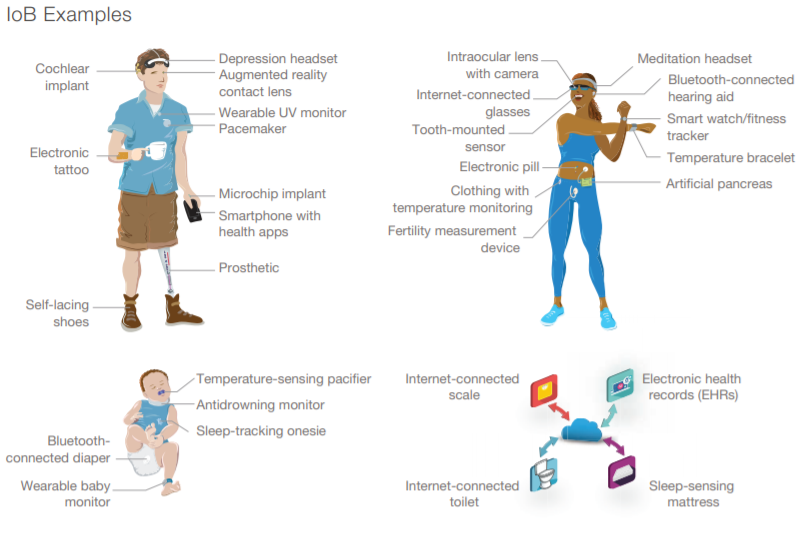ARPA-H REACT program can be used to improve healthcare or enable a biomedical surveillance regime: perspective
The United States Advanced Research Projects Agency for Health (ARPA-H) is launching an Internet of Bodies-infused research project to implant tracking devices while delivering bioengineered treatments in patients’ bodies.
ARPA-H’s Resilient Extended Automatic Cell Therapies (REACT) research program aims “to develop new technologies that will automatically deliver treatments and monitor for disease from within an individual’s body.”
REACT will develop two platforms:
- An implantable “Living Pharmacy” to automatically deliver prescribed treatments.
- An implantable “Living Sentinel” that allows the individual or their care team to detect key biomarkers of disease.
ARPA-H wants these two devices to be “implanted in patients during minor outpatient surgery,” with the ability to “interface with a simple software platform or app that allows users to track their condition directly.”
An implantable “Living Pharmacy” would consist of “a bioelectronic carrier that maintains cells engineered to create and provide a hormone, cytokine, or other therapeutic molecules.”
This “bioelectronic carrier” (aka implantable device) “would be controlled externally by the individual, who will “subscribe” to a treatment regimen as prescribed by their doctor.”
An implantable “Living Sentinel” would “consist of a similar carrier-and-cell combination to the ‘Living Pharmacy‘ but would use the cells to detect a key biomarker of disease, which could be tracked through a secure connection between the sentinel and a secure, handheld device, such as a smartphone.”
“REACT will create new devices to improve a person’s ability to get the medicine when and where they need it and to better monitor their condition, providing them with more control and freedom in their daily lives and improving their well-being”
ARPA-H REACT Program Manager, Dr. Paul Sheehan, Ex-DARPA Program Manager
With the REACT program, ARPA-H is tapping into the Internet of Bodies (IoB) ecosystem of wearables, implantables, and consumables that measures and surveils everything that is going on inside the human body.
According to a World Economic Forum (WEF) briefing paper, the IoB is an ecosystem consisting of “an unprecedented number of sensors attached to, implanted within, or ingested into human bodies to monitor, analyze, and even modify human bodies and behavior.”
In 2020, the RAND corporation published a report stating:
The Internet of Bodies “might trigger breakthroughs in medical knowledge […] Or it might enable a surveillance state of unprecedented intrusion and consequence”
RAND Corporation

The solutions that ARPA-H seeks have the potential to vastly improve the overall health and wellbeing of citizens, but at the same time they could also contribute to a technocratic, biomedical security regime in which citizens’ physical and mental health statuses are constantly monitored and surveilled to enforce compliance with whatever mandates public and private entities decide to issue.
As investigative journalist and author Whitney Webb warned in Unlimited Hangout back in May 2021, ARPA-H could “merge ‘national security’ with ‘health security’ in such as way as to use both physical and mental health ‘warning signs’ to prevent outbreaks of disease or violence before they occur.
“Such a system is a recipe for a technocratic ‘pre-crime’ organization with the potential to criminalize both mental and physical illness as well as ‘wrongthink.‘“
“Increased Internet of Bodies adoption might also increase global geopolitical risks, because surveillance states can use IoB data to enforce authoritarian regimes”
RAND Corporation
Ryan Cristian, founder and editor of The Last American Vagabond (TLAV), recently pointed out how the IoB technology coming out of the ARPA-H REACT program could be used by governments to crackdown on citizens who don’t comply with medical mandates.
“It’s simple to make this sound like it’s completely within your control,” said Cristian, adding, “but what happens when you’re arrested because you wouldn’t take the injection everyone needs to stay safe, and they decide they’re going to do this to you because they’re your caretakers now, or any number of other possibilities where that aspect becomes not by choice?” he asked.
Cristian also observed that ARPA-H research programs were taking ideas and personnel from the Defense Advanced Research Projects Agency (DARPA) and then transferring them for civilian use instead of military applications.
And he’d be correct.
For example, apart from being modeled after DARPA, ARPA-H put out a broad agency announcement back in August for its “Shared Health Applications Research for Everyone” (SHARE) program, which sought “to adapt Department of Defense (DoD) and other related government entities’ health innovations more broadly to all Americans.”
And guess who’s heading up the ARPA-H’s latest REACT program?
It is ex-DARPA program manager Dr. Paul Sheehan, whose research at DARPA specialized in “leveraging developments in synthetic biology to detect and address threats to human health, including novel pathogens in the environment and microbial imbalances in the gut.”
At DARPA, Dr. Sheehan was program manager for several projects, including the ADvanced Acclimation and Protection Tool for Environmental Readiness (ADAPTER) program, which was aimed at developing an “implantable or ingestible bioelectronic carrier” that would eliminate the five major bacteria associated with traveler’s diarrhea, along with a “non-genetic” integrated system aimed at reducing jet-lag duration.
Other DARPA programs that Dr. Sheehan led include “Biological Control” to combat biological threats, speed healing after physical trauma, and support military readiness; “Friend or Foe” to develop bio-surveillance technology that can detect bacterial pathogens as, or even before, they threaten the military and homeland; and “BETR” to bioengineer soldiers for smart and adaptive wound recovery by combining bioelectronics, artificial intelligence, biosensors, tissue engineering, and cellular regeneration.
ARPA-H will hold a Proposers Day for the REACT program on November 16 in Denver, Colorado.
Image by user6702303 on Freepik












